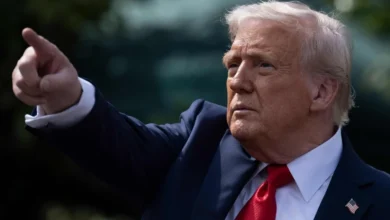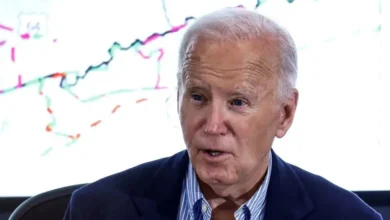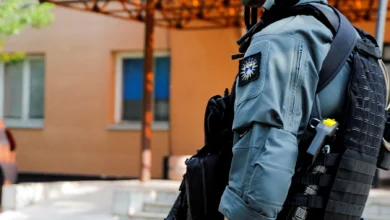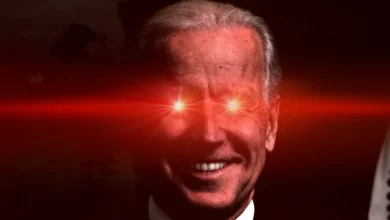‘Lunatic’: Trump’s long history of abusing judges who oppose him
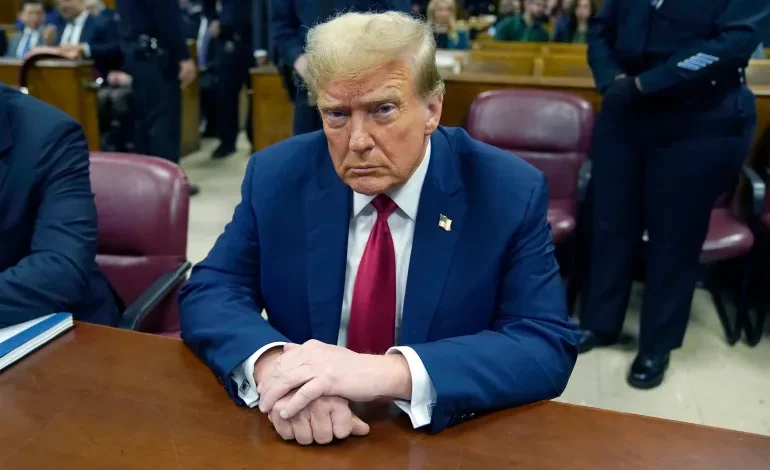
United States President Donald Trump has doubled down on his criticism of a federal judge, calling him “radical left” for blocking the deportation of Venezuelan migrants, as his administration ramps up rhetoric against the courts.
Trump on Tuesday called for the impeachment of Judge James Boasberg, accusing him of putting the US at risk. “We don’t want vicious, violent, and demented criminals, many of them deranged murderers, in our country,” Trump posted on Truth Social on Tuesday.United States President Donald Trump has doubled down on his criticism of a federal judge, calling him “radical left” for blocking the deportation of Venezuelan migrants, as his administration ramps up rhetoric against the courts.
Trump on Tuesday called for the impeachment of Judge James Boasberg, accusing him of putting the US at risk. “We don’t want vicious, violent, and demented criminals, many of them deranged murderers, in our country,” Trump posted on Truth Social on Tuesday.Attorney General Pam Bondi accused the judge of “meddling in our government” while White House Press Secretary Karoline Leavitt believes judges are acting as “judicial activists”.
The US president on his part called Boasberg a “radical left lunatic” “appointed by [former president] Barack Hussein Obama”.
Supreme Court Chief Justice John Roberts has criticised calls to impeach Judge Boasberg, but that has not stopped Trump from attacking the judge. The US president lashed out at Roberts as well, suggesting the Supreme Court itself was compromised by political bias.
The latest rhetoric is just one in a series of attacks Trump has launched against judges and courts who challenge his policies or hold him accountable in cases brought against him.
Why have Trump and officials from his administration clashed with the judiciary? There’s a troubling pattern of Trump attacking judges and courts in the past. Let’s take a look.A pattern of attacks?
Trump’s contempt for the courts predates his presidency but reached new levels during his time in office. Usually, if a ruling went against him, the judge was deemed by Trump biased, incompetent, or part of a left-wing conspiracy.
One of the earliest examples came in 2016 when Trump, then a presidential candidate, attacked US District Judge Gonzalo Curiel, who was overseeing fraud lawsuits against his now-defunct Trump University. Trump suggested Curiel was unfit to preside over the case because of his Mexican heritage, calling him a “hater” and implying he could not be fair due to Trump’s hardline stance on immigration. The attack drew widespread condemnation.Once in the White House, Trump continued to fight the judiciary. In 2017, when Judge James Robart issued a temporary block on his travel ban targeting Muslim-majority countries, Trump labelled him a “so-called judge” and accused him of endangering national security.
In 2018, Trump dubbed Judge of the US Court of Appeals for the Ninth Circuit Jon Tigar “an Obama judge” after he ruled that an immigrant could claim asylum regardless of where she entered the country.
The same year, Trump attacked the judiciary after an appeals court in California blocked his administration from deporting young immigrants shielded under an Obama-era programme.
Trump did not hesitate to also target the Supreme Court when it ruled against him.
He was incensed when the court rejected his attempts to overturn the 2020 election results. Trump continues to believe that his 2020 presidential election was stolen. In particular, he turned against Chief Justice Roberts, calling him “disgraceful” and “a disappointment”.
Did his attacks against the judiciary go up after the end of his first term?
As Trump’s legal troubles mounted after his presidency ended in 2020, his attacks on judges became even more personal. Facing multiple indictments ranging from election interference to business fraud, Trump often took to social media to condemn judges overseeing his cases.
In his New York civil fraud case, where he was found liable for boosting his net worth, Trump called Judge Arthur Engoron “unhinged” and a “Trump-hating, radical left, Democrat operative”. He mocked his law clerk on social media, saying he was “politically biased and corrupt”, prompting a gag order.Despite the restriction, Trump did not hold back.
In his federal election interference case, presided over by Judge Tanya Chutkan, Trump labelled her “highly partisan”, “very biased and unfair”, and suggested she was out to get him. His verbal assaults led prosecutors to argue that his rhetoric was endangering the judicial process and potentially inciting threats against judges and court staff.
